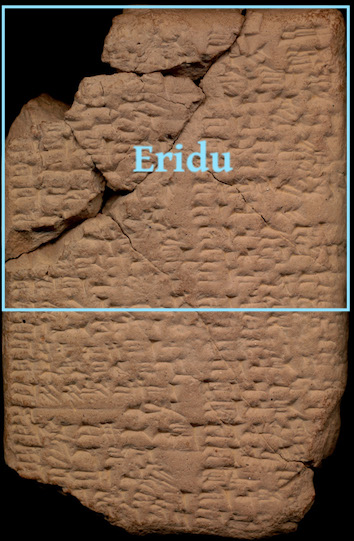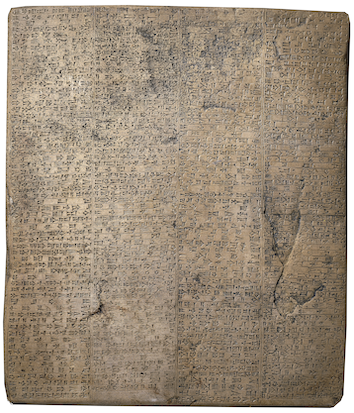Ehursagsikila (temple of Gula/Ninkarrak at Babylon)

According to Tablet IV of the scholarly compendium Tintir = Babylon, one of the thirteen religious buildings in the Eridu district of East Babylon (very likely located in the Esagil temple complex) was dedicated to the healing goddess Gula (Ninkarrak). That text called at temple Egalmah, while inscriptions of the Neo-Babylonian king Nebuchadnezzar II (r. 604–562 BC) referred to it as Ehursagsikila, which, despite the lack of concrete evidence, is either a byname or later name of that Gula temple in Babylon. This still-to-be-discovered religious building had a long history. It is first mentioned during the reign of the Old Babylonian king Sūmû-abum (r. 1894–1881 BC) and last mentioned around 90 BC in texts found in the Parthian-Period Rahimesu archive.
Names and Spellings
This temple at Babylon went by the Sumerian ceremonial names Egalmah and Ehursagsikila, which mean "Exalted Palace" and "House, Pure Mountain" respectively. The former name is also used for Gula temples at Ashur (modern Qalat Sherqat), Isin (modern Ishan al-Bahriyat), Ur (modern Tell el-Muqayyar), and Uruk (modern Warka).
- Written Forms: e₂-gal-mah; e₂-hur-sag-sikil-la; e₂-hur-sag-sikil-lu.
Known Builders
- Old Babylonian (ca. 1900–1600 BC)
- Sūmû-abum (r. 1894–1881 BC)
- Neo-Babylonian (ca. 625–539 BC)
- Nebuchadnezzar II (r. 604–562 BC)
Building History
This Gula temple was likely rebuilt by Sūmû-abum, the first king of the First Dynasty of Babylon (ca. 1894–1595 BC). The work was completed in his fourth regnal year (ca. 1890 BC).

BM 129397, a large stone tablet that bears a long Akkadian inscription that is now commonly referred to as the "East India House Inscription." The description of Nebuchadnezzar's rebuilding of Gula's temples in Babylon is recorded in lines iv 38–43. Image adapted from the British Museum Collection website. Credit: Trustees of the British Museum.
After a gap of approximately 1285 years, information about the building history of Ehursagsikila (Egalmah) resumes during the reign of the Neo-Babylonian king Nebuchadnezzar II, the king who transformed Babylon into an imperial megacity. Several inscriptions of his, including one written on a large stone tablet (the so-called "East India House Inscription"), record that he rebuilt this temple of Gula at Babylon. Unlike many of the temple building projects of his at Babylon, a few more details about Nebuchadnezzar's work on Ehursagsikila are recorded in extant inscriptions of his. A text written on a three-column clay cylinder records the following:
Like Gula's temple Esabad, which was located in the Tuba district of West Babylon, Nebuchadnezzar claims to have built Ehursagsikila's structure with bitumen (Akkadian kupru) and baked brick (Akkadian agurru). References to Nebuchadnezzar examining the earlier foundations of a temple and seeking divine support through sacrificial divination (extispicy), especially for projects in Babylon, are not commonly attested in this Neo-Babylonian king's preserved inscriptions.
Although Ehursagsikila was in use until ca. 90 BC, nothing is known about its building history after the reign of Nebuchadnezzar II. In this late period, Ehursagsikila is not only mentioned together with Esabad and Ehursagkuga (a third temple of Gula at Babylon), it is also reported to have been in a garden of juniper trees.
Archaeological Remains
Ehursagsikila/Egalmah has not yet been positively identified in the archaeological record.
Further Reading
- George, A.R. 1992. Babylonian Togographical Texts (Orientalia Lovaniensia Analecta 40), Leuven, pp. 305–306.
- George, A.R. 1993. House Most High. The Temples of Ancient Mesopotamia (Mesopotamian Civilizations 5), Winona Lake, p. 88 no. 319 and p. 102 no. 488.
- Pedersén, O. 2021. Babylon: The Great City, Münster, p. 166.
Jamie Novotny & Joshua Meynell
Jamie Novotny & Joshua Meynell, 'Ehursagsikila (temple of Gula/Ninkarrak at Babylon)', Babylonian Temples and Monumental Architecture online (BTMAo), The BTMAo Project, a sub-project of MOCCI, [http://oracc.org/btmao/Babylon/TemplesandZiggurat/Ehursagsikila/]